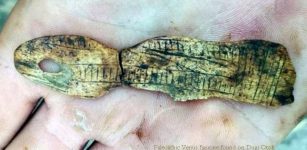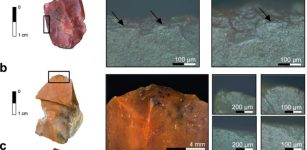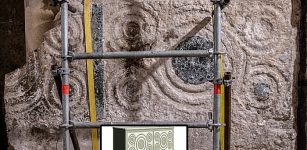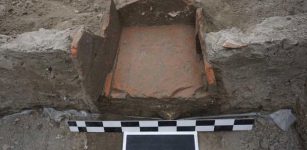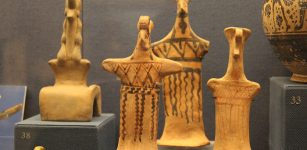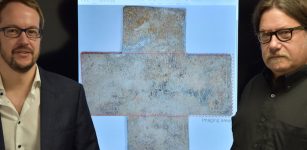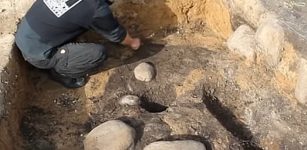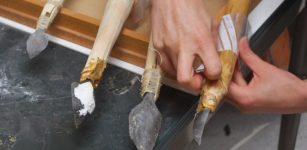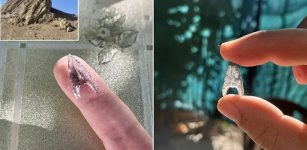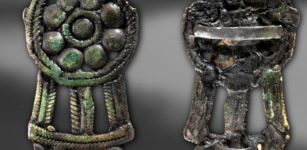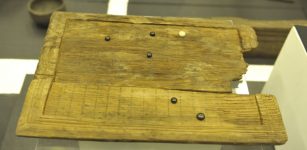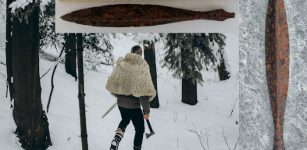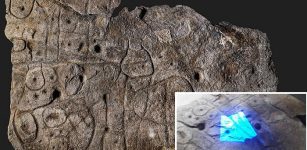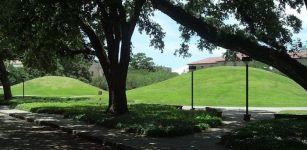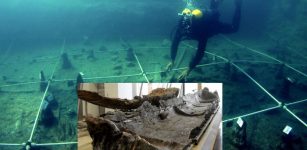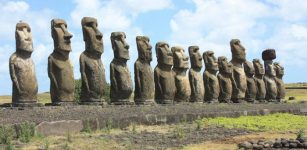14,000-Year-Old Settlement In British Columbia
AncientPages.com - While excavating in British Columbia, archaeologists have unearthed a 14-year-old settlement that is only much older than the Roman Empire and the Egyptian pyramids, but also confirms ancient oral myths of the Heiltsuk Nation and the concept of ‘time immemorial'.
Members of the archeology team, from left to right, John Maxwell, Alisha Gauvreau, and Seonaid Duffield work on excavating the site. (Joanne McSporran )
"Heiltsuk oral history talks of a strip of land in that area where the excavation took place. It was a place that never froze during the ice age and it was a place where our ancestors flocked to for survival," said William Housty, a member of Heiltsuk Nation.
The ancient settlement was discovered by archaeologist Alisha Gauvreau, a PhD student from the University of Victoria and a scholar with the Hakai Institute. Gauvreau and her team found several artifacts including carved wooden tools at the site.
By excavating through meters of soil and peat, the team identified a paleosol, a thin horizontal layer of soil that contained a hearth-like feature.
Tests have now revealed that the fragments are over 14,000 years old and the settlement was built during the last ice age where glaciers covered much of North America.
The discovery is highly significant because it confirms ancient oral traditions. "This find is very important because it reaffirms a lot of the history that our people have been talking about for thousands of years," Housty said.
"When First Nations talk about time immemorial, it just goes to show how far back the occupation of this land goes back in deep time," Gauvreau said.
The finding also has broader implications for human history — namely early North Americans travelled the coast.
See also:
How and when humans entered the Americas is still debated. One theory is that is they came from Asia over an Alaskan land bridge through an ice-free corridor east of the Rockies and made their way through what is now eastern and central Canada, Gauvreau explained.
"The alternative theory, which is supported by our data as well as evidence that has come from stone tools and other carbon dating, is people were capable of travelling by boat. From our site, it is apparent that they were rather adept sea mammal hunters," Gauvreau said.
Housty, who sits on the board of directors for the Heiltsuk Resource Management Department, said the scientific validation will help in future negotiations over land title and rights.
"When we do go into negotiations, our oral history is what we go to the table with," Housty said.
"So now we don't just have oral history, we have this archaeological information. It's not just an arbitrary thing that anyone's making up ... We have a history supported from Western science and archaeology.
"AncientPages.com
Expand for references

